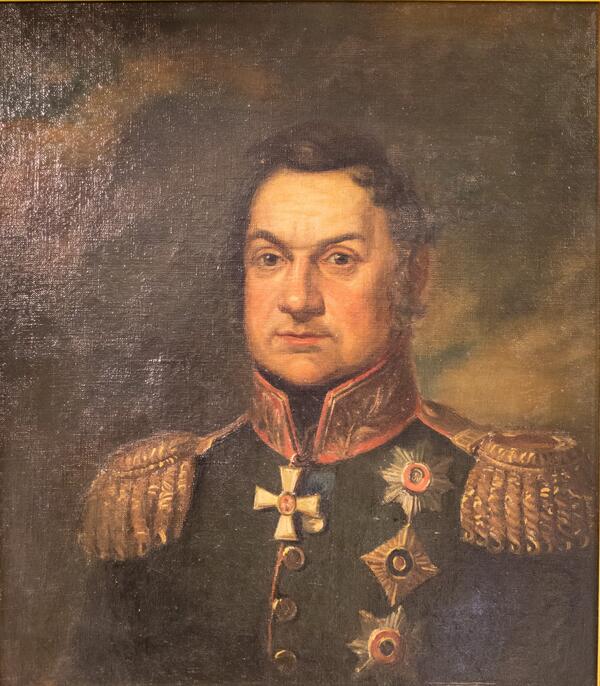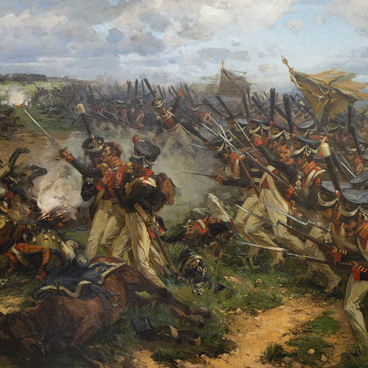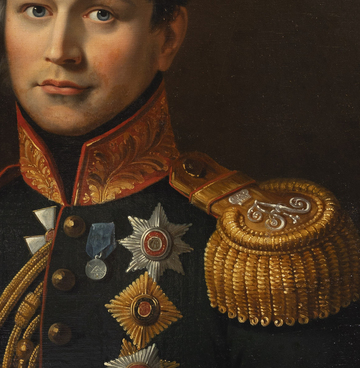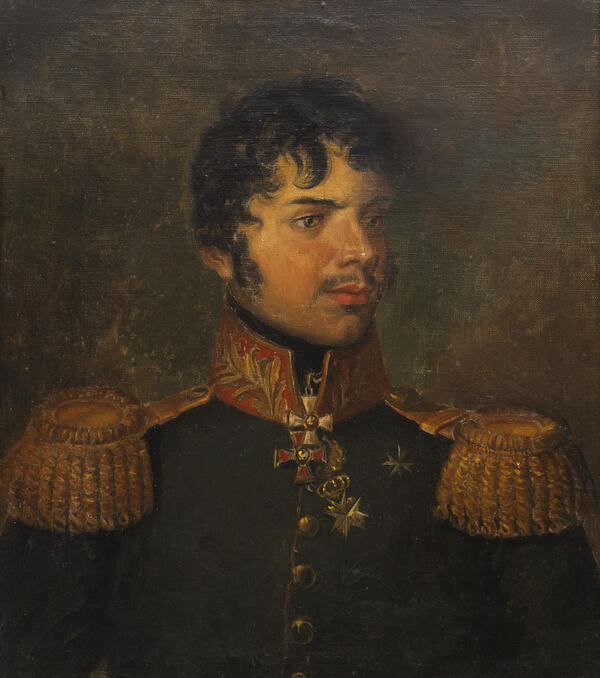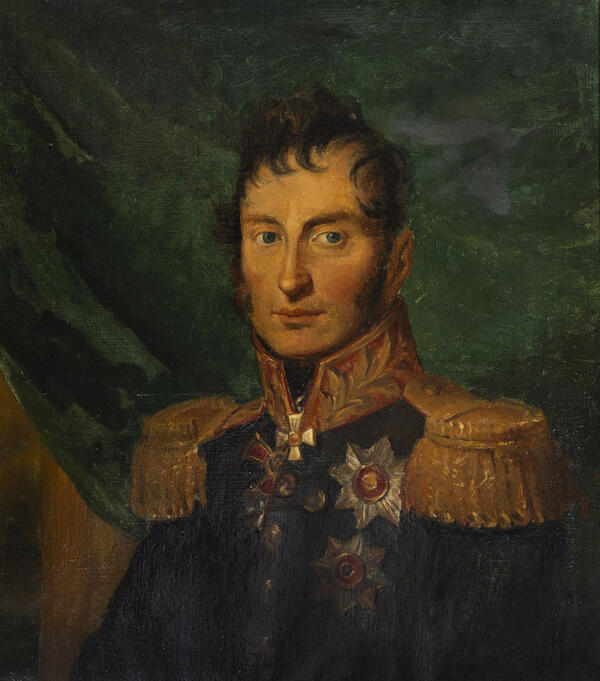Dmitry Sergeyevich Dokhturov was a nobleman from the Tula Governorate. After graduating from the Page Corps in 1781, he was enlisted as a lieutenant in the Preobrazhensky Life Guards Regiment. Dmitry Dokhturov participated in the Russo-Swedish War in the period from 1789 to 1790, and was wounded twice — in Rochensalm and Vyborg.
In 1795, Dokhturov was promoted to colonel and appointed commander of the Yelets Infantry Regiment, two years later he became major general and chief of the Sofia Infantry Regiment, and in 1799 — lieutenant general.
From 1801, he led the Olonets Musketeer Regiment, and from 1803 — the Moscow Musketeer Regiment. In 1805, he participated in the battles of Krems, for which he received the Order of St. George, 3rd class, and Austerlitz. In 1806 he commanded the 7th Infantry Division and distinguished himself at Golymin, and in 1807 — at Preussisch-Eylau, Guttstadt, Heilsberg, and Friedland.
In 1810, Dmitry Dokhturov was promoted to infantry general. In the campaign of 1812, he led the defense of Smolensk. In the Battle of Borodino, he was in the center of the Russian position. When Pyotr Ivanovich Bagration was wounded, Dokhturov took command of the 2nd Western Army, and held positions behind the Semyonovskaya heights. He was awarded for the battle with diamonds for the Order of St. Alexander Nevsky.
During the Council at Fili, he spoke in favor of engaging in battle near Moscow. He distinguished himself in the Battle of Maloyaroslavets and was presented with the Order of St. George, 2nd class. In 1813, he commanded troops in the Duchy of Warsaw, proved himself in the Battle of Leipzig, and led the siege of Magdeburg and Hamburg. In January 1816, due to illness, he retired and died soon after. Dmitry Dokhturov was buried in St. David’s Hermitage in the Moscow Governorate.
The general died long before the English artist George Dawe began his work on the Military Gallery for the Winter Palace. Apparently, when painting the portrait, Dawe referred to a lifetime portrait by an unknown artist or an engraving based on it made by Alexey Agapovich Osipov in 1817. A reproduction of Dawe’s painting housed in the Borodino Museum-Reserve was created in 1951 by the artist Dmitri Vasilyevich Titov.
